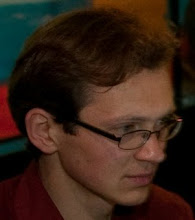The history of phonetic alphabets doesn't seem to be very well documented before Henry Sweet, 1874 (of Sweet's Anglo-Saxon Reader and "hebban olla vogola"). This particular phonetic alphabet is in Charles de Brosses, Traité de la Formation Méchanique des Langues et des Principes de l'Étymologie, 1765.
De Brosses holds that the only phonetically distinctive part of a language are its consonants; the vowels, he argues, are much more like the arbitrarily selected tones on a continuous scale. He divides up consonants in six groups: those formed with lips, throat, teeth, palate, tongue, and nose. Between these he distinguishes further between soft, rude, and moderate. For the Brosses this essentially captures all the phonetic differences in the world, the rest depending on undistinctive "local colour", though he allows for some finer contrast in the "organic" transcription of sounds.
woensdag 22 februari 2012
zondag 19 februari 2012
zaterdag 4 februari 2012
Heden geen tweedehands brood
Heden geen tweedehands brood
al dreigt er nog zo’n hongersnood
is het beschuit op, eet dan cake
maar deze bakkerij verkoopt
heden geen tweedehands brood
Heden geen tweedehands brood
want de inflatie is te groot
het goud dat u ervoor betaalt
verandert straks alweer in lood
heden geen tweedehands brood
[2008?]
al dreigt er nog zo’n hongersnood
is het beschuit op, eet dan cake
maar deze bakkerij verkoopt
heden geen tweedehands brood
Heden geen tweedehands brood
want de inflatie is te groot
het goud dat u ervoor betaalt
verandert straks alweer in lood
heden geen tweedehands brood
[2008?]
vrijdag 3 februari 2012
A monument for the Unknown Know-All
and other recent drawings
Two in the Architectures series:
And another one of the Rotbeesten ("bloody animals")
Two in the Architectures series:
And another one of the Rotbeesten ("bloody animals")
The Owl of Minerva
Abonneren op:
Reacties (Atom)








